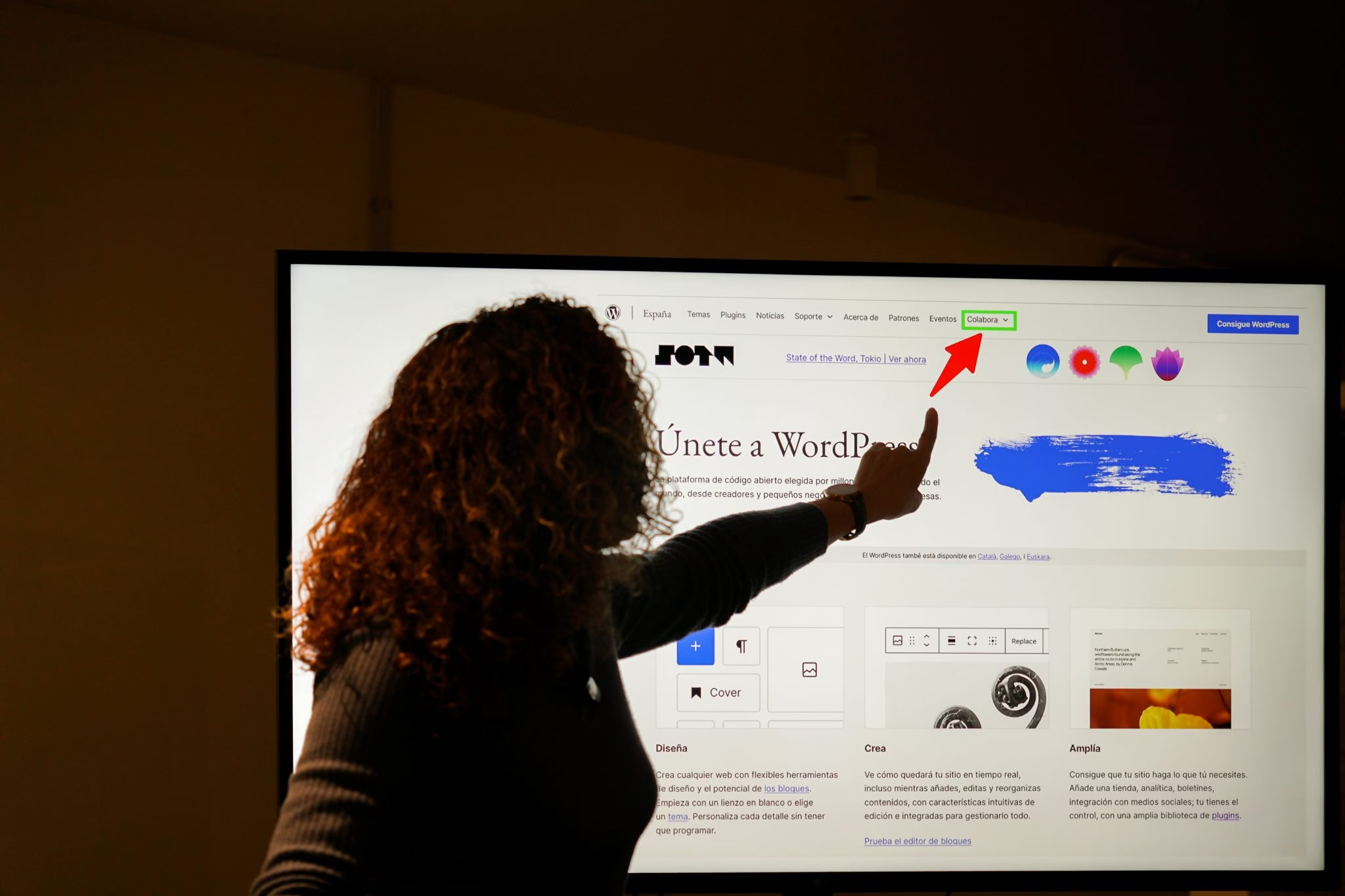In a digital world where smartphones rule the game, having a mobile friendly website in Nigeria is no longer a luxury—it’s a requirement. You could have the best business idea, amazing products, and even competitive pricing, but if your website isn’t mobile-friendly, you might be waving goodbye to potential customers before they even get a chance to meet you.
Let’s dig into the real reasons why going mobile-friendly matters big time, especially in a place like Nigeria.
1. Over 70% of Nigerians Access the Internet via Mobile Phones
Let’s start with the obvious. Nigeria is a mobile-first country. In fact, according to Statista, mobile phones account for over 70% of internet traffic in Nigeria. That’s millions of people who are discovering, scrolling, shopping, and making decisions—right from their phones.
Now imagine you launch a beautiful website that looks amazing on a laptop, but when a mobile visitor checks it out… it’s a hot mess. Text is tiny. Buttons are too close. Images are cut off. Will they stay? Probably not.
A mobile friendly website in Nigeria ensures that your content looks great and functions well on any device. This means you’re speaking your audience’s language—the language of convenience.
🔗 Related Tip: Use Google’s Mobile-Friendly Test Tool to quickly check how your website performs on mobile.
2. User Experience: The Silent Deal-Breaker
Let’s be honest—users won’t wait for your site to load if it’s laggy or hard to navigate. Especially not when your competitor’s website loads in 3 seconds or less.
A mobile friendly website in Nigeria provides smoother navigation, fast-loading pages, tap-friendly buttons, and text that adjusts perfectly to small screens. The easier it is for users to browse your site, the more likely they are to take action—whether that’s placing an order, signing up for a newsletter, or sending a WhatsApp message.
In short, bad user experience costs you money. Good user experience makes you money.
💡 Pro Tip: Avoid clutter. On mobile screens, simplicity wins. Use clear fonts, big buttons, and short, punchy text.
3. Google’s Algorithm Loves Mobile-First Websites
If you care about showing up on Google search results (and you should!), here’s something important: Google ranks websites based on their mobile version first. This is called mobile-first indexing.
So if your desktop site looks sharp but your mobile site looks like something from 2006, Google isn’t impressed. And neither are potential visitors.
Want to rank for keywords like “affordable website in Nigeria” or “online store setup Nigeria”? Then a mobile-optimized site is your golden ticket.
📈 Need More Proof? According to Google, 53% of mobile users abandon sites that take longer than 3 seconds to load.
4. Conversion Rates: Turn Visitors into Buyers
What’s the point of traffic if no one takes action?
A mobile friendly website isn’t just about looks—it’s about conversion. When visitors find it easy to navigate, understand your offer, and complete a task (like buying a product or booking a service), they’re far more likely to convert.
Nigerian customers are busy, cost-conscious, and quick to judge. They’re comparing you with other sites before making a move. A mobile-optimized website tells them, “Hey, we’re legit, we’re serious, and we care about your experience.”
🛒 Ecommerce Alert: If you’re selling online in Nigeria, having a responsive checkout process is non-negotiable. Nobody wants to zoom in to enter card details.
5. Competitive Advantage for Small Businesses
Most small businesses in Nigeria still rely heavily on social media alone for visibility. That’s great—but it’s not enough.
Having a mobile friendly website in Nigeria gives your brand a professional edge. It says, “We’re not just on Instagram—we’re running a real business.” It separates you from the casual hustlers and puts you in the big leagues.
💥 Bonus Benefit: You control your website. You don’t need to pray that the algorithm shows your post to customers. You own the space, 24/7.
Steps to Build a Mobile-Friendly Website in Nigeria

Mobile Friendly Website Nigeria
So you’ve realized it’s time to go mobile. That’s a big step—and the right one. In a country like Nigeria, where more than 80% of internet users access the web through mobile phones, having a mobile-friendly website is no longer a fancy extra—it’s survival. If you’re wondering how to build a mobile friendly website Nigeria businesses can thrive on, you’re in the right place.
Whether you’re a small business owner, a creative professional, or a side-hustler aiming for digital greatness, the steps below will walk you through the mobile-first website game like a pro.
1. Start with a Clear Goal
Before you start clicking templates or buying domains, pause and ask yourself: What do I want my website to do?
Is your goal to:
- Show off your product catalog?
- Collect leads and inquiries?
- Educate and build authority with blog content?
- Sell physical or digital products directly?
Understanding your site’s main function helps you choose the right structure, tools, and layout that suits mobile screens and Nigerian users’ expectations.
If you’re not clear yet, take a look at successful small business sites in your niche or visit InstantWebsiteSetup.com for expert advice and tailored options.
2. Choose a Mobile-Optimized Platform
For Nigerians building websites on a budget, WordPress is an excellent starting point. It powers over 40% of the web, and with the right theme and plugins, it can deliver blazing-fast, fully responsive sites. Plus, it’s flexible for both blogs and e-commerce.
Other beginner-friendly mobile-ready platforms include:
- Wix – drag-and-drop simplicity, though limited flexibility
- Shopify – excellent for mobile-first e-commerce, though costlier
- Webflow – powerful, but has a steeper learning curve
Pro tip: Go for platforms that offer responsive design by default and allow you to preview how your site looks on various screen sizes.
3. Register a Nigerian-Friendly Domain
You need a domain name that’s easy to spell, memorable, and ideally brandable. If you serve a Nigerian market, using .com.ng or .ng can help with local trust and identity.
But if you’re eyeing a global reach, stick with a .com domain. At Instant Website Setup, we help you register the right domain with one-year free hosting to go along with it.
4. Select a Mobile-First Theme
This step is HUGE.
A mobile-friendly website in Nigeria is only as good as the theme it wears. Your theme should:
- Automatically adapt to any screen size
- Be lightweight for fast loading on Nigerian networks
- Have readable font sizes, clean navigation, and thumb-friendly buttons
Great mobile-first WordPress themes include:
- Astra
- OceanWP
- GeneratePress
- Neve
These themes also allow you to customize the layout with Elementor or Gutenberg, and they’re built for speed.
5. Compress, Optimize, and Shrink Your Images
Nothing kills your site faster than 5MB photos that load like molasses on a 3G network in Ibadan.
To build a mobile friendly website Nigeria visitors won’t bounce from, always compress your images before uploading. Use tools like:
- TinyPNG
- ShortPixel
- Smush (WordPress plugin)
These tools retain image quality while reducing file size, helping your mobile site load faster and keeping your visitors happy.
6. Make Navigation Thumb-Friendly
Remember, mobile users navigate with their thumbs. Your menus and buttons should be:
- Clearly visible
- Easy to tap (44px minimum)
- Organized in drop-downs or expandable sections
Avoid tiny links that require a needle-like tap. Think: “Can my aunty navigate this without squinting?” If the answer’s no, go back and fix it.
7. Integrate WhatsApp and Contact Forms
Nigerians love chatting directly—be it for price negotiations, order tracking, or asking questions. Add a WhatsApp chat button to your mobile site for instant engagement.
Also include:
- A simple contact form
- Location map if you’re a physical business
- Click-to-call buttons for mobile users
Plugins like WPForms or Elementor Forms can help you achieve this easily.
8. Test on Real Devices
Once your website looks ready, don’t just rely on your laptop preview. Test it on real mobile phones—Android, iPhone, tablets.
Check for:
- Text readability
- Tap target sizes
- Loading speed
- Broken layouts
And don’t forget to use Google’s Mobile-Friendly Test Tool (test here) to ensure your site ticks all the mobile optimization boxes.
9. Optimize Speed with Caching and Lazy Loading
Most Nigerian visitors are browsing on limited data plans. A slow site equals lost leads.
Install speed boosters like:
- WP Rocket
- W3 Total Cache
- LiteSpeed Cache (if your hosting supports it)
Also, activate lazy loading so images load only when they’re needed, not all at once. It saves bandwidth and boosts speed—perfect for Nigeria’s mobile-first crowd.
10. Don’t Forget SEO for Mobile
You can build the most beautiful site in Nigeria, but if nobody finds it, what’s the point?
Use Yoast SEO or Rank Math plugins to:
- Add keywords in page titles, meta descriptions, and content
- Create a mobile-friendly sitemap
- Improve crawlability for Google
Also make sure your site loads fast (under 3 seconds), because Google uses mobile-first indexing.
Internal Tip: What You Should Do Now
Now that you know the key steps, the next best action is to start. Don’t get stuck overthinking the design or perfect logo. Focus on function. A mobile friendly website Nigeria audiences can easily browse is better than a fancy desktop site no one can use on a phone.

Need help setting it up right? Reach out to InstantWebsiteSetup.com and we’ll handle the setup and mobile SEO for you.
SEO Optimization for Mobile-Friendly Websites
So your shiny new website looks great on phones—fantastic! But how do you make sure people actually find it?
This is where SEO (Search Engine Optimization) steps in like the fairy godparent of visibility. In Nigeria’s fast-growing online space, making your mobile friendly website Nigeria users can discover easily through search is the key to growing your business online.
Let’s break it down into actionable steps. Don’t worry—no confusing tech jargon here, just real-world advice to get you noticed on Google.
1. Mobile SEO Starts with Mobile Speed
Search engines, especially Google, prioritize speed on mobile. A mobile website that loads like a sleepy snail will get pushed down the rankings, even if it looks fantastic.
Here’s what you can do to boost your mobile load time:
- Compress images using free tools like TinyPNG
- Enable caching using WordPress plugins like WP Rocket or LiteSpeed Cache
- Minimize CSS and JavaScript with plugins like Autoptimize
- Use Google PageSpeed Insights to spot bottlenecks
Remember, mobile users in Nigeria are mostly browsing on 3G or 4G networks, so every second counts. Aim for a load time under 3 seconds.
🧠 Pro tip: Your mobile site’s speed isn’t just about user experience—it’s a direct SEO ranking factor.
2. Use Mobile-Responsive Meta Tags
Meta what? Don’t panic! Meta tags are the behind-the-scenes labels that tell search engines what your page is about.
Make sure your website has:
- A mobile viewport tag in the HTML
<head>section (if you’re not using WordPress, this matters) - Unique title tags and meta descriptions for every page
- Focus keyphrases included in both (e.g., “mobile friendly website Nigeria”)
Here’s an example of a good meta description for your homepage:
“Affordable, fast, and mobile friendly website Nigeria businesses can rely on. We help you launch & grow online effortlessly.”
If you’re using WordPress, the Yoast SEO plugin makes this super easy—even for beginners.
3. Focus on Local SEO (Google Loves It)
Since you’re targeting customers in Nigeria, it’s smart to let Google know that.
You can boost your visibility by:
- Registering your business on Google Business Profile
- Including location-based keywords like “Lagos web design,” “mobile friendly website Nigeria,” “Abuja small business SEO,” etc.
- Embedding a Google Map on your contact page
- Using country-specific domain extensions like .com.ng (optional)
Google loves serving localized results to users searching nearby. If your website says “Hey! I’m in Nigeria and proud!”—you get a little SEO boost.
🔗 Tip: Add internal links from your blog to service pages like InstantWebsiteSetup.com to guide users and improve SEO flow.
4. Write for Humans (Not Just Robots)
This one’s easy but often overlooked. Your content must be:
- Easy to read on small screens (short paragraphs, bullet points, subheadings)
- Written in natural, conversational English (like this blog!)
- Full of useful info people are actually searching for
Avoid stuffing your content with awkward phrases like:
“We create mobile friendly website Nigeria businesses like mobile friendly website Nigeria which is the best mobile friendly website Nigeria.”
🛑 That’s a no-no.
Instead, weave the keyphrase in naturally, like:
If you want a mobile friendly website Nigeria customers can easily browse on their phones, here’s how to start…
Use the keyphrase a few times throughout your page. Once in the first paragraph, once in a subheading, and a handful more spread naturally.
5. Use Schema Markup (Advanced But Powerful)
If you’re feeling fancy or have a web designer helping you, you can use schema markup to give search engines more context.
This can help you:
- Show review stars in search
- Display event dates or prices
- Improve your site’s visibility with “rich snippets”
For small businesses in Nigeria, even basic schema for your name, phone number, and service area can work wonders. Use a plugin like Schema Pro or Yoast SEO Premium to handle it easily.
6. Secure Your Site (SSL = Trust + Rankings)
If your site doesn’t start with HTTPS, fix that now. Google treats secure sites more favorably, and browsers will warn users that your site is “not secure.”
Most reputable hosts (including ours at Instant Website Setup) provide free SSL certificates with all website packages.
Security isn’t just for peace of mind—it directly impacts SEO and user trust.
7. Submit Your Website to Google
Once your mobile-friendly website is live, don’t wait for Google to find it like a lost treasure. Submit your sitemap manually via Google Search Console.
This tells Google:
- “Hey, here’s my site!”
- “Here’s what each page is about”
- “Here’s what to rank me for”
The quicker Google indexes your site, the faster you start getting search traffic.
📢 Need help? We offer full setup, submission, and SEO optimization on InstantWebsiteSetup.com.
Wrapping It All Up
Optimizing your mobile friendly website Nigeria users will love doesn’t require a PhD in digital marketing. It just takes attention to detail, a few smart tools, and a mindset that puts mobile users first.
Focus on:
- Speed
- Clarity
- Local intent
- Human-friendly content
- Trust signals like HTTPS
SEO is never a “set and forget” strategy—it’s an ongoing journey. But starting with the right foundation means you’re miles ahead of your competitors who are still stuck in 2010 desktop mode.
If you’d rather not stress over mobile SEO, let us handle the hard parts. Visit InstantWebsiteSetup.com to get a fully mobile-optimized, SEO-ready website built for your business in Nigeria.
🧱 Common Mistakes to Avoid with Mobile-Friendly Sites
Just like driving through Lagos without checking traffic updates, launching a mobile-friendly website without knowing what not to do is a recipe for frustration.
Even the most enthusiastic small business owners in Nigeria can fall into these avoidable traps. Here’s how to dodge them like a pro and keep your mobile friendly website Nigeria-ready, fast, and user-focused.
1. Designing Only for Desktops
This is a classic rookie move—designing a beautiful site on a laptop and forgetting most of your audience is browsing on phones.
You need to build mobile-first, meaning your design should work well on small screens before anything else. That means:
- Text that’s easy to read without zooming in
- Buttons that fingers can tap easily (no microscopic links!)
- Content that stacks well vertically
💡 Tip: Use tools like Chrome’s mobile view simulator or simply test your website on different phones before going live.
2. Using Heavy Media and Uncompressed Images
While that 10MB HD hero image might look amazing on your desktop, it’ll slow your mobile site to a painful crawl.
Mobile users in Nigeria often have limited data or spotty internet, so you’ve got to stay lean and clean.
What to avoid:
- Auto-playing background videos
- High-resolution images that aren’t compressed
- Pop-ups that cover the entire screen
Use tools like TinyPNG or image optimization plugins to resize and compress your media files for the web.
3. Forgetting to Test on Real Devices
A common mistake? Only relying on desktop browser tools to test mobile layouts. But nothing beats the real thing.
Make it a habit to check how your site appears and functions on:
- Android devices (most common in Nigeria)
- iPhones
- Tablets like iPads or Tecno DroiPads
- Low-end phones with small screens
If it’s hard to navigate, takes forever to load, or looks broken—fix it before your customers bounce.
4. Ignoring Core Web Vitals
Google introduced something called Core Web Vitals, and they really affect your ranking. These include:
- LCP (Largest Contentful Paint) – How long it takes the main content to load
- FID (First Input Delay) – How fast your site responds when clicked or tapped
- CLS (Cumulative Layout Shift) – How stable your content is as it loads
Neglecting these can hurt your visibility. You can check them on Google PageSpeed Insights.
If you’re not sure how to fix these issues, we can help you here.
5. Not Having a Clear Call-to-Action (CTA)
You’ve built a sleek mobile site, but what’s the next step for your visitors?
Too many websites forget to guide users, especially on mobile where attention spans are shorter.
Avoid these mistakes:
- Hiding CTAs behind clutter or sliders
- Using tiny fonts for important buttons
- Not telling users what to do next (e.g., “Call now,” “Order online,” “Get a free quote”)
Your mobile friendly website Nigeria users land on should make the action crystal clear—within the first few seconds.
6. Skipping Regular Updates & Maintenance
Many Nigerian businesses launch their websites and then forget about them—like building a house and never sweeping it again.
Mobile-friendly sites require:
- Regular plugin and theme updates (especially on WordPress)
- Content refreshes to stay relevant
- SEO tweaks as Google’s algorithm changes
If you’re not maintaining your site regularly, it could get slow, insecure, or worse—completely inaccessible on mobile.
At Instant Website Setup, we offer ongoing maintenance plans so you never have to worry about the backend.
🎯 Conclusion: How to Build a Mobile-Friendly Website in Nigeria
Let’s bring it all home.
Having a mobile friendly website Nigeria users can easily access isn’t just a bonus—it’s a business essential in 2025 and beyond. With over 80% of internet traffic in Nigeria coming from mobile devices, it’s your chance to connect, sell, and grow directly in people’s palms.
Here’s a quick recap of what we covered:
- Why it matters – Mobile usage is dominant in Nigeria, and Google prioritizes mobile-friendly websites in search.
- How to build it – Choose the right platform, use responsive themes, simplify your layout, and test for real-world performance.
- SEO it well – Speed, mobile responsiveness, clear content, and localization are key to ranking on Nigerian search results.
- Avoid mistakes – Don’t overload your site, ignore testing, or forget regular updates and mobile-friendly CTAs.
If this feels like a lot to juggle, don’t worry—you don’t have to do it alone. At InstantWebsiteSetup.com, we specialize in building fast, responsive, mobile-first websites tailored for Nigerian businesses like yours. We’ll handle the tech, so you can focus on growth.
Ready to take your business mobile?
👉 Let’s set up your mobile-friendly site today




